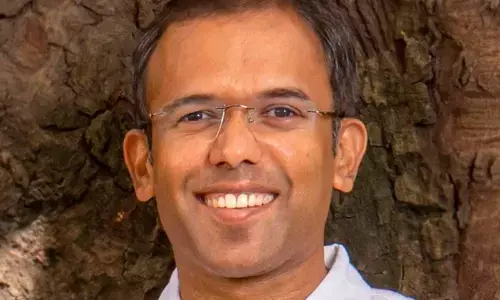Why diversity and inclusion at workplace are important

Why diversity and inclusion at workplace are important
Keeping diversity and inclusion at the centre of our professional endeavours is a leap towards greater success, innovation and a better world
"Inclusivity means not 'just we're allowed to be there,' but we are valued. I've always said: smart teams will do amazing things, but truly diverse teams will do impossible things." – Claudia Brind-Woody
It is the era of globalized connectivities and workplaces are becoming more dynamic than ever. With Covid-19, consequent challenges and a shift to digital work, modern work is all about increased flexibility, accommodation and adaptability. In the same regard, accommodating people across the social spectrum and ensuring representation continues to be important. Across the various distributive inequalities that mark our socioeconomic existences, work continues to promise a site where hard work pays off and inclusivity and diversity go a long way in bolstering its sanctity.
Diversity and inclusivity have been found to be in direct correlation to profit making and business expansion. McKinsey's 2019 analysis found that companies in the top quartile for gender diversity on executive teams were 25 per cent more likely to have above-average profitability than companies in the fourth quartile - up from 21 percent in 2017 and 15 per cent in 2014. Great Place to Work's research established that diverse and inclusive workplaces have seen 5.4 times higher employee retention than a usual work setting, increased ability to recruit a differentiated, specialised talent pool, greater readiness to innovate as well as higher revenue generation. Their study showed that when employees in a high-trust culture experience a caring workplace, they are 44 per cent more likely to work for a company with above-average revenue growth and consequently racially diverse organisations averaged 11.1 per cent growth against the 8.6 per cent of companies with the most disparities.
This has obvious reasons. To innovate effectively, you need to have a multitude of perspectives and ideas, instead of being trapped in a homogenous echo chamber. With greater representation and an increased variety of ideas, inspiration and rigour follow because of the fact that everyone can bring something new to the table. It is also essential to build a better world, as when groups which had been denied equal access to work start speaking, we move towards greater enlightenment, new idioms of productivity and a new vibrant community with a polyphony of expressions. It is among the surest keys to combat gender inequality, class disparities, racial discrimination and other ills by empowering everyone on the same platform.
However, the task is not simple in the slightest and requires conceptual clarity before action. Diversity and inclusion are often spoken of in the same vein and conflated, and while they might be interlinked, they cannot be interchanged. Diversity is about the composition of an organization and the representation of different groups while inclusion is about the impact and value of these diverse contributors are synergized at the workplace. For the workplace to be diverse and inclusive, everyone from different origins in their different roles have to be equitably accommodated and valued. This is a complex terrain. Expert Matt Bush asks the right questions in this regard, with respect to valuing people in all areas:
"The 'all areas' part is important. Do you have diversity in your recruiting, in each of your departments, and in your leadership? Or do you have a workplace where 50 per cent of your employees are women but 0 per cent of your women are managers? Do you have good representation of employees of color overall, but all of them are in the same department?"
Questions like these are necessary in a world of promotional stunts and compromised aspirations of inclusivity. Hiring for diversity heedlessly is not enough, it is important to build a workplace that sustains it. To this end, distribution of role-responsibilities and privileges has to be democratized. It is also necessary to acknowledge the unequal state of affairs as they exist.
A survey report from Boston Consulting Group (BCG) found among the Fortune 500 companies, only 24 CEOs happen to be women, which represents just 5 per cent of the total number of CEOs and the same report pointed out that, among the 500 CEOs, only three are black, another three belong to the LGBTQ+ community. Therefore, a company has to stay committed, despite initial steps of hiring, to include voices irrespective of their age, race, gender, religion, sexuality, physical conditions and so on and have suitable policies for the protection of the interests of employees and have adequate space for mentoring and support.
To sum up, keeping diversity and inclusion at the center of our professional endeavours is a leap towards greater success, innovation and a better world. The task is not easy in a world with divides but is a worthy step in the right direction and we must fuel ourselves to take it.
(The author is Chief Impact Officer at Recykal Foundation)



















